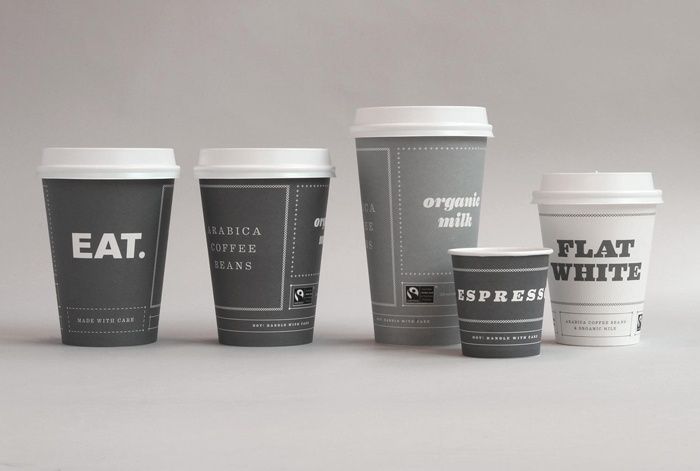As environmental awareness grows, the demand for sustainable products has never been higher. One area seeing a significant shift is the production of custom cups. Businesses and individuals alike are now looking for ways to reduce waste, use renewable materials, and adopt eco-friendly practices in the cup manufacturing process.
Choosing Eco-Friendly Raw Materials
The journey toward sustainability begins with the materials used. Traditional cups are often made from plastic or non-recyclable paper lined with polyethylene. These materials contribute heavily to pollution and landfill waste. In contrast, sustainable cup production relies on renewable or compostable materials.
Bamboo, cornstarch-based plastics, and recycled paper are some of the leading alternatives. Bamboo, for instance, is fast-growing and doesn’t need chemical fertilizers. Cornstarch-based bioplastics degrade naturally and leave behind no toxic residues. Recycled paper cuts down the need for virgin pulp and reduces deforestation.
In addition to the raw materials, inks and dyes used in cup designs are also crucial. Water-based inks are much less harmful compared to petroleum-based ones. Soy-based inks are another popular sustainable option because they are biodegradable and require less energy during production. These choices make a big difference in the overall environmental impact.
Sourcing also plays a role in material sustainability. Suppliers who follow ethical and eco-conscious practices are preferred. Local sourcing reduces carbon emissions due to shorter transportation routes. This makes the supply chain cleaner and supports local economies at the same time.
Extending Product Life Cycle Through Design
One of the best ways to improve sustainability is by designing cups that last longer. Products that are durable and reusable reduce the need for constant replacement and lower overall waste.
Reusable custom designed cups made from materials like stainless steel, bamboo, or durable glass are gaining popularity. These materials resist wear and tear and can last for years. Even when single-use cups are necessary, designing them for compostability helps ensure they don’t harm the environment after use.
Modular or multi-use designs are also effective. For instance, a cup that can be used for both hot and cold drinks reduce the need for separate products. Some cups come with interchangeable lids, sleeves, or handles that allow customization while maintaining the base product’s structure.
Designers are also focusing on aesthetics to make the product more appealing. If a cup looks good, people are more likely to use and keep it. When consumers feel attached to an item, they’re less likely to throw it away.
Energy-Efficient Manufacturing Processes
Energy use during production can significantly affect a product’s environmental footprint. Traditional factories often rely on fossil fuels, which release large amounts of carbon dioxide. A sustainable approach focuses on minimizing energy use and shifting to renewable energy sources.
Many modern production facilities are now powered by solar or wind energy. These clean energy sources reduce emissions and promote long-term savings. Upgrading machinery to energy-efficient models is also an essential part of this process. These machines consume less electricity and perform tasks more quickly.
Automation and smart manufacturing systems further improve energy efficiency. These technologies optimize production lines, minimize downtime, and reduce material waste. They also allow better monitoring of energy use, so companies can track and improve their sustainability goals more effectively.
Temperature control systems are another area where energy savings are possible. Insulated equipment and regulated heating or cooling processes help maintain optimal temperatures without unnecessary energy waste. Some companies even recover heat from production processes and reuse it for other tasks.
Minimizing Production Waste
Waste in manufacturing is a significant environmental issue. In cup production, offcuts, defective products, and packaging waste can add up quickly. However, sustainable practices are changing how waste is managed.
One of the first steps is improving quality control. By using better machines and inspection systems, the rate of defective cups is reduced. Fewer defective items mean less waste.
Companies are also implementing lean manufacturing techniques. These methods focus on reducing waste at every stage of production. Raw materials are measured precisely, so excess is minimized. Leftover materials are reused or recycled rather than discarded.
Zero-waste policies are another strategy being adopted. Under this approach, companies aim to reuse or recycle 100% of their waste. For instance, paper scraps can be pulped and used in new batches. Bioplastics can often be remolded or composted. Even shipping boxes and packaging materials are designed for reuse or recycling.
Sustainable Packaging Solutions
Packaging is an often-overlooked aspect of sustainability. Custom cups must be packaged for storage and transport, and doing this sustainably can greatly impact the product’s overall footprint.
One of the most effective strategies is using recycled and recyclable packaging materials. Cardboard made from recycled content is commonly used. It is sturdy and easy to print on while being environmentally friendly. Biodegradable packing peanuts made from cornstarch and shredded paper are also widely adopted.
Minimalist packaging design is another smart approach. Reducing the amount of packaging material not only saves resources but also reduces shipping weight, leading to lower fuel consumption. Some companies use custom-sized packaging that fits their products exactly, reducing the need for fillers and extra boxes.
Innovative designs such as foldable or stackable packaging also improve space efficiency during transport. This reduces the number of shipments needed, further cutting carbon emissions.
Water-based or soy-based inks are also used in printing on packaging to avoid toxic chemicals. These options are safer and more eco-friendly than traditional petroleum-based inks.
Supporting Local and Ethical Labor
Ethical labor practices are a crucial yet often ignored part of sustainability. A product cannot be truly sustainable if the workers making it are underpaid or unsafe.
Sustainable custom cup production supports fair wages, safe working conditions, and local employment. Factories that operate under ethical guidelines provide training, safety equipment, and reasonable hours. This not only ensures worker well-being but also leads to higher-quality products.
Hiring locally also has environmental benefits. It cuts down on travel emissions for workers and supports community development. When workers live near their workplaces, they are more likely to remain in their jobs longer, leading to lower turnover and more efficient production.
Certifications like Fair Trade or ISO labor standards help verify ethical practices. Companies that seek out these certifications demonstrate a strong commitment to social responsibility.
Partnerships with small or family-owned businesses further boost sustainability. These partnerships encourage shared growth, cultural preservation, and innovation.
Encouraging Consumer Responsibility
Sustainability doesn’t end at the factory—it extends into the hands of consumers. Educating buyers on how to use, reuse, and dispose of cups responsibly plays a vital role.
Brands are now adding sustainability tips to their packaging and websites. Instructions might include how to compost a biodegradable cup or where to recycle it. Some companies even create online platforms where consumers can track how much waste they’re reducing.
Reward programs can motivate responsible behavior. For example, customers may receive discounts for returning used cups or for bringing their own reusable ones. This builds a strong connection between brand and buyer.
Workshops, social media content, and in-store demos help raise awareness. When customers understand the impact of their actions, they are more likely to make informed choices.
Transparency also builds trust. Brands that share their environmental goals and achievements make consumers feel part of something bigger. This sense of shared purpose inspires greater care and responsibility.
Industry-Wide Collaboration and Innovation
No single company can achieve full sustainability alone. Collaboration across the industry is essential to make meaningful progress. Shared knowledge, joint ventures, and standard-setting benefit everyone involved.
Manufacturers are now forming alliances to share best practices and pool resources for research. This helps create innovative technologies and scalable solutions. For instance, new composting facilities are being developed that can handle bioplastic cups efficiently.
Governments and NGOs are also getting involved by offering grants, certifications, and training programs. These initiatives help smaller companies adopt sustainable methods without facing financial hurdles.
Industry forums, webinars, and conferences offer platforms for ongoing dialogue. These events encourage partnerships and help spread awareness about new sustainable technologies.
Shared databases and online platforms allow manufacturers to access the latest eco-friendly resources. This speeds up the transition to cleaner methods and reduces the cost of experimentation.
Conclusion
Sustainable practices in custom cup production are no longer optional—they are essential for the future of both the planet and the industry. From choosing eco-friendly raw materials and reducing energy consumption to minimizing waste and supporting ethical labor, each step plays a vital role in creating a greener product lifecycle. Companies that invest in sustainable solutions not only help protect the environment but also build stronger relationships with consumers who value responsibility and transparency. As innovation continues and collaboration grows across the industry, the path toward more sustainable and ethical production becomes clearer and more achievable. The shift is already happening, and those who lead with purpose today will shape a cleaner, more conscious tomorrow.



